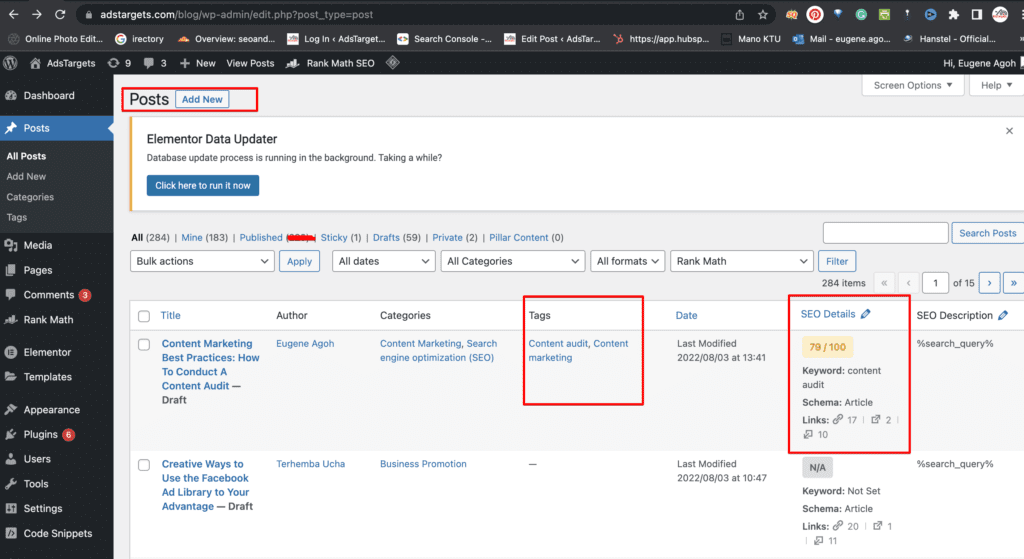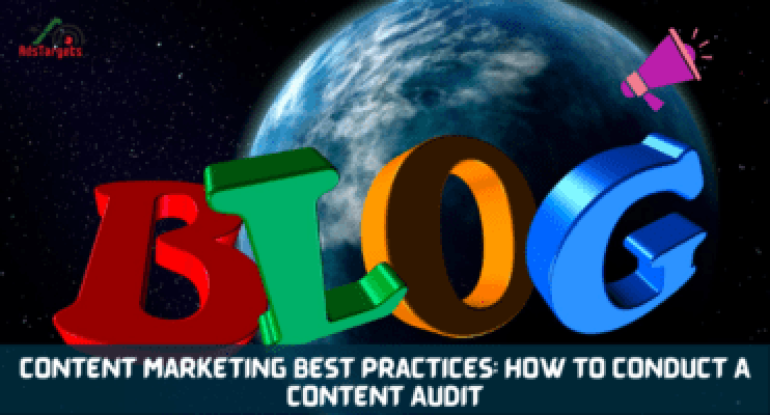I’m sure you must have heard of the phrase “online marketing is the new oil”. Now think of content as the extracting and refining machine for that oil.
Content is the backbone of marketing but not stale content, take note. Stale or bad content is cancerous to the system of your marketing, so there is always a need to dish out relevant and up-to-date content for your target audience.
In business planning, there`s a need to take stock of all the content on your website, assessing its relative strengths and weaknesses, dusting up what needs to be dusted and updated
This is done to prioritize your future marketing campaign. A content audit will tell you where you need to focus your future efforts in terms of both an SEO and content marketing perspective.
Through content auditing, marketers can read the marketing weather, and take a measured decision as regards the market.
A well-studied and executed content audit done on an annual basis can deliver big insights into your website’s blog and content marketing strategy that far exceeds its dull reputation.
Through an audit, content is refreshed and brought up to date.
If the explanation so far has not lightened up the dark picture of content auditing in your mind, Let me rephrase and say it more clearly and better.
A content audit is a cornerstone activity in any content strategy endeavor. It’s a way of evaluating what’s working well and what`s going south and would need help to be returned to benefit marketing efforts.
A content audit helps you evaluate your current content and shape your future content strategy.
You should carve out the time to do a content audit to see where the gaps are and to start creating better content to fill those gaps up.
There are no rights or wrongs or finite steps to a content audit, but here in this article, I will provide you with the best practices to conduct your content audit successfully.
Table of Contents
ToggleQuestions that your Content Audit should Answer
#1. What are my competitors talking about?
#2. Whom is my content addressing?
#3. What content should be updated or removed?
#4. What problems do I want to address?
#5. What should my content strategy be?
#6. Why am I running a content audit?
#7 Have I identified weak points in my content?
#8. What is the strength of my content?
#9. What kind of offers performs well on a specific segment of customers?

What are the most important things to look for when auditing your content?
#1. Typographical errors
#2. Grammatical Mistakes
#3. Photo files renamed and alt text
#4. External linking to relevant and high-quality website
#5. Internal linking to the relevant blog posts
#6. Heading Tags
#7. Plagiarism
#8. Easy to understand and user-friendly language
#9. Content structure and format
#10. Relevant images, infographics, and videos
#11. Content alignment and highlighting
The Content Audit Process
Although there are many varying content audit processes, as there are different audit specialists so are their different processes, the analysis framework is similar.
#1. Step 1: Generate A List Of All Your Content: The first thing you should do is take stock of all your content. You may want to compile a list of URLs and place them in a spreadsheet.
If you have a small website, you can do it manually, but otherwise, I suggest you use software like Screaming Frog to help you by extracting data & auditing.
#2. Step 2: Retrieve Metrics, And Categorize the Content: Now that you have collected your content in a place and with a good idea of what you have, it’s time to find out how it’s working.
Low-performance content should be your first point of call. Dig to identify the weakness in the content.
If you plan to do multiple content audits or are working on a very large website, doing all of this manually would be crazy.
Hire a developer to create a simple tool that extracts all that data from different APIs and saves hours of work.
#3. Step 3: Create An In-depth Customer Profile: organize customers into specific groups possessing similar goals or characteristics.
This helps you identify the kind of people who are most likely to engage with you and buy your products and services, customer profiles also help you refine your marketing messages and improve your customer experiences.
#4. Step 4: Conduct a “Gap” Analysis: At this stage, you should compare your current performance with your desired, expected performance.
A gap analysis visualizes the difference between reality and target for your organization, making it easy to show employees where there is still room to grow.
It is a great way to picture your organization and show where your organization is struggling and thriving to get.
#5. Step 5: Create Your New Content Strategy: The last step is to create a content strategy that addresses all the weaknesses identified in the preceding steps. And that requires a lot of manual work and careful consideration.
In summary, the content process starts from the analyst through the editor (writer) to end at the desk of the Web manager.
Best Practices to Conduct a Content Audit
#1. Identify Your Goals
A content audit is a difficult and time-consuming process, but there is always a starting point and that will be, to begin with, clear and defined objectives if you are to make it a success in the end.
Make sure you have a clear understanding of why you are conducting an audit on your content, and what you hope to achieve. This will give you direction and grant you a better chance of obtaining valuable and useful insight.
Here are some examples of goals you can set for your website content audit:
#1. Identify gaps in topics covered, and come up with new ideas
#2. Gain an understanding of your audience’s preferences and dislikes
#3. Increase Audience Engagement
#4. Identify content that is working and one that is not working and the why behind it.
#5. Identify methods to improve Your SEO Results
#2. Identify What Metrics to Focus on
Now you are done defining your goal, the next important step is to identify what metrics you are focusing efforts on. Identifying the metric you are focusing on will not only make your audit successful it will also help you streamline the process.
With a streamlined process, you will drop off unnecessary baggage in your content audit journey. For instance, if your target metric is business performance, attention would be focused on metrics such as sales, marketing, and profitability.
This will allow you to determine where to make adjustments to reach set goals for the overall growth of your business.

#3. Separate Your Content According To Its Type
Organizing content so it has a logical flow makes a lot of sense. It’s important when conducting a content audit to make a comprehensive list of all the content you have published, and from there, separate this list according to whether it’s onsite, offsite, or social.
It’s much easier to navigate content that is organized according to type, it lets you quickly assess whether the content is relevant for your purposes.
Organizing your content into different categories (e.g. blog, success stories page, knowledge base) is important to understand which channels on your site are performing best in terms of traffic, engagement, and other metrics
When your content is organized properly according to type, it erases all chances of a user who clicks on one thing stumbling upon something else.
So you see, it is very important to categorize your content.
#4. Leverage Analytical Software for E-commerce Optimization
There is a great need to analyze various information about your online business like Sales, Customers, Products, Prices, etc. This helps to grow the business by analyzing the data and then taking the right decision.
The short and easy route to get these analyses done is through the use of analytical software which enables you to identify successes and issues faster, as well as store, edit and perform keyword optimization for product pages when appropriate.
E-commerce Analytics helps businesses study the users’ behavior and determine how the site should be structured based on a customer’s preference, the product landing page is most likely to engage the customer and convert them by getting them to make a purchase.
Analyzing the data helps brands to find out online trends and consumer behavior.
To get an in-depth analysis of your brand’s performance on parameters like stock availability, banner visibility, ranking of sponsored listings, etc. you need to leverage analytical software.
#5. Gather Relevant Insights
Insights are the basis for sound business decisions. They are used as a business operational manual, and when properly utilized, relevant insights can drive significant improvement to your business performance.
Businesses can use these insights to expand their product/service offerings, develop new marketing strategies, create detailed customer personas and customer journey maps, and enhance current offerings.
Because smart use of customer insights is intended to improve customer experience, it can also mean more revenue for your business.
Conclusion
Most online stores that use content marketing have weaknesses in their content. It is either the content doesn’t work as well as it should or they’re missing content for certain topics and keywords.
And also on the list of things that such companies miss out on are some great good deals. Hey! If you are that company, don’t feel bad if you don’t think your content is not driving sales as it should instead, acknowledge that this is an opportunity to further improve your content marketing processes.
With a content audit, you can be able to know which topic or content format is preferred so that you can have a better idea for future content marketing.










